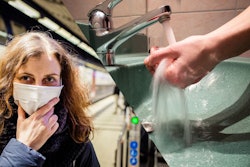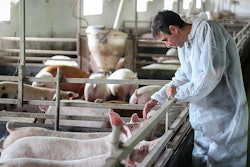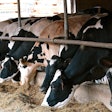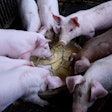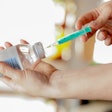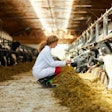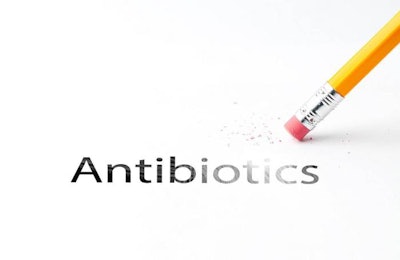
Coinciding with a new global initiative to address antimicrobial resistance, the United Kingdom is setting new targets for the reduction of antibiotic use in food-producing animals.
Involving representatives of the veterinary and farming community, the organization for the Responsible Use of Medicines in Agriculture Alliance (RUMA) have developed a new set of targets to cut antibiotic use in the country over the next four years.
RUMA’s latest targets come after the largely successful implementation of the previous set of goals, which were introduced in 2017. The Alliance says 75% of the original targets have been achieved, and the time is right to set the next set of challenges.
“The UK farming industry has responded extremely well to the targets,” said the chair of RUMA, Cat McLaughlin. “Our original aim of lowering overall antibiotic use — and in particular highest-priority critically important antibiotics (HP-CIAs) — has been achieved in the face of some challenging external conditions.”
Accurate data on antibiotic use has been established across most livestock sectors, she said. Even for those sectors where data capture is lower, overall antibiotic use has been falling, particularly for HP-CIAs.
Lower antibiotic use in U.K. animal agriculture
A report published recently revealed that sales of veterinary antibiotics have fallen significantly in the European Union – including the U.K. — over the past decade.
Confirming the situation and with additional detail is a similar survey covering the U.K. only. Just published by the Veterinary Medicines Directive (VMD) is its latest report for 2019 —Veterinary Antimicrobial Resistance and Sales Surveillance (UK-VARSS 2019). This provides evidence that the nation’s sales of antibiotics for food-producing animals have halved since 2014. Compared to the 62 mg/kg at that time, average use in 2019 was 31 mg/kg.
New targets for the UK
For the period 2021-24, the new targets for and approaches to antibiotic use set by the RUMA task force depend on the current status and recent progress.
Sectors covering the poultry meat, laying hens, salmon and trout have already achieved low levels of use, and comprehensive data. Generally, they will focus more on disease prevention strategies, including high levels of biosecurity.
For a second group, good progress has been made on reducing reliance on antibiotics. Including the pig and game bird sectors, further reduction in antibiotic use is achievable. A main priority will be on those producers that persistently use high amounts of medications.
For the third and final group, covering beef cattle, dairy cattle, calves and sheep, antibiotic usage levels are not comprehensively recorded. In the coming years, aims for these sectors focus on the calculation, benchmarking and central uploading of data on antibiotic use, as well as reducing overall usage.
Global perspective on antibiotic use, antimicrobial resistance
Organized by the European Centres for Disease Control (ECDC), European Antibiotic Awareness Day was held on November 18, 2020. It coincides with first day of the World Health Organization (WHO) Antibiotic Awareness Week, which runs until November 24.
Together with the United Nations’ Food and Agriculture Organization (FAO), WHO launched the One Health Global Leaders Group on Antimicrobial Resistance on November 20. Main aims of this initiative are to attract global attention, and to stimulate action to preserve antimicrobial medicines and avert the disastrous consequences of antimicrobial resistance.
Misuse and overuse of antimicrobials in humans, animals and agriculture are the main drivers of antimicrobial resistance, according to the WHO. Resistant micro-organisms can spread between humans, animals or the environment, and the antimicrobial medicines used to treat various infectious diseases in animals and humans are often the same.
“No single sector can solve this problem alone,” said Qu Dongyu, director-general of FAO. “Collective action is required to address the threat of antimicrobial resistance across different economic sectors and country borders.”


